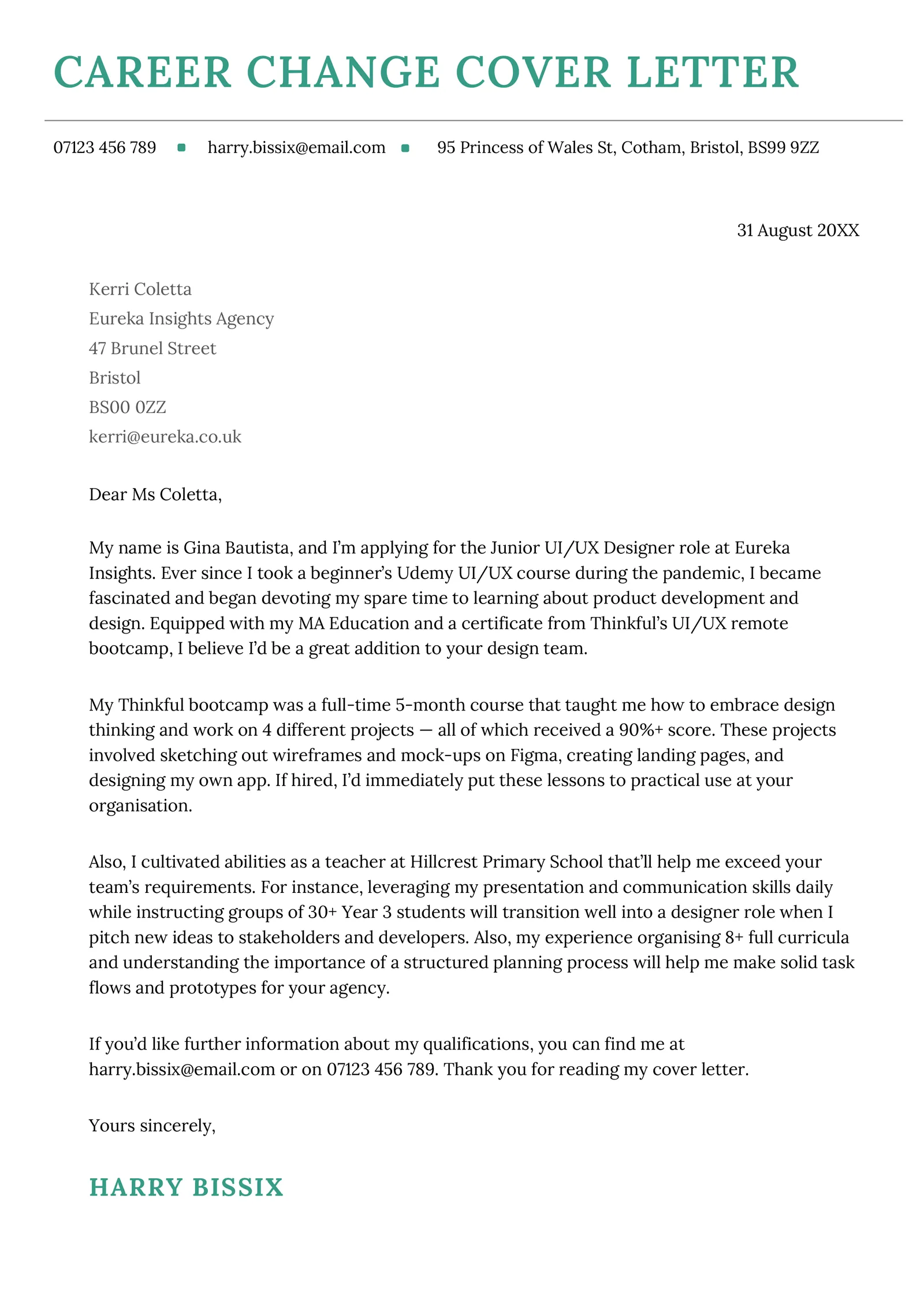Understanding the Career Change Cover Letter
Embarking on a new career path is an exciting yet challenging endeavor. One of the most crucial tools in your arsenal is a well-crafted cover letter. Unlike a standard cover letter that simply reiterates your resume, a career change cover letter must address the elephant in the room your shift in professional direction. It should not only highlight your existing skills and experience but also demonstrate how they are relevant and valuable to your desired new role. This requires a strategic approach, careful planning, and a clear understanding of what employers seek when considering candidates from different backgrounds. This guide will help you navigate the process, providing you with the secrets to create a compelling cover letter that grabs attention and increases your chances of landing interviews.
Why a Specialized Cover Letter Matters
A generic cover letter won’t cut it when you’re changing careers. You need a specialized cover letter that directly addresses the career transition. This type of letter serves several key purposes. First, it acknowledges your career shift upfront, removing any potential confusion or surprise from the hiring manager. Second, it bridges the gap between your past experiences and the requirements of your target role, demonstrating how your skills and knowledge are transferable and valuable. Finally, it showcases your enthusiasm for the new field and your commitment to making a successful transition. By showing the hiring manager your awareness and addressing the career change directly, you build trust and demonstrate your forward-thinking nature.
Highlighting Transferable Skills
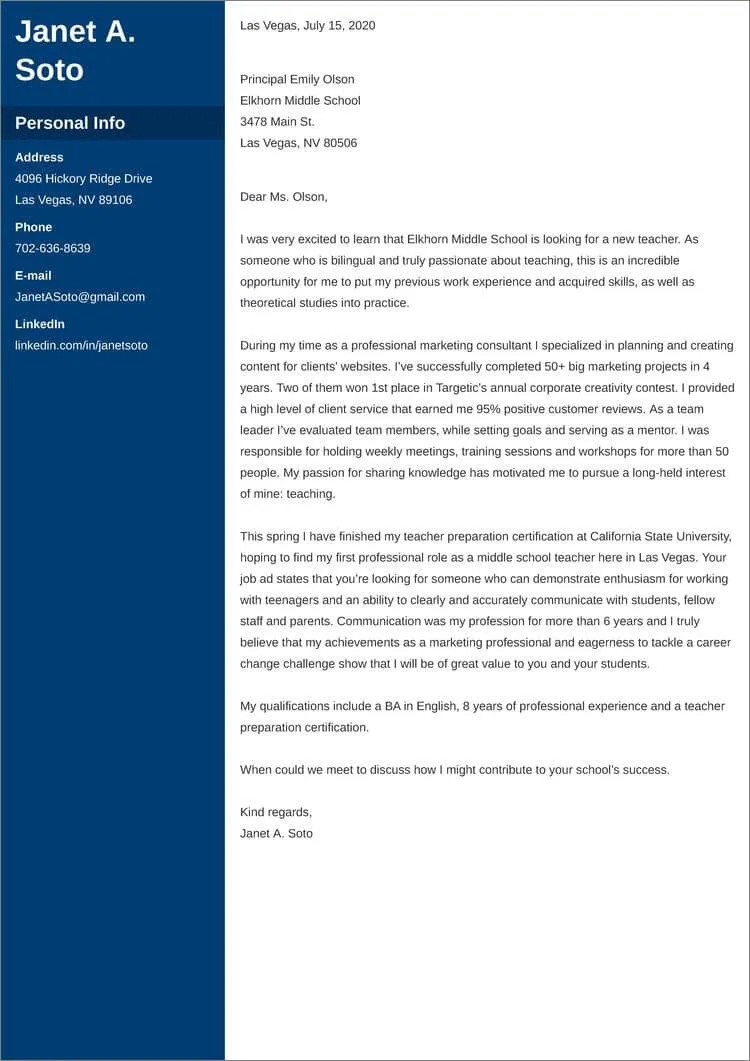
One of the most effective strategies in a career change cover letter is highlighting transferable skills. These are skills you’ve acquired in previous roles that are also valuable in your new desired field. It’s crucial to identify these skills and showcase them prominently. Examples of transferable skills include communication, problem-solving, leadership, project management, and analytical abilities. Focus on providing specific examples of how you’ve utilized these skills in past experiences. For instance, if you’re transitioning from project management to marketing, you might highlight your experience in coordinating cross-functional teams, managing budgets, and delivering projects on time and within scope. Tailoring your cover letter to emphasize these transferable skills can help you gain a significant advantage.
Identifying Your Target Audience
Before you start writing, identify your target audience the hiring manager or the person who will be reading your cover letter. Research the company and the specific role. Understanding the company’s values, mission, and the requirements of the job description will help you tailor your letter to resonate with the reader. Look for keywords in the job description that align with your skills and experience. These keywords should be incorporated naturally throughout your cover letter to demonstrate that you possess the required skills and qualities. Also, investigate the hiring manager’s background and preferences if possible. This information allows you to personalize your letter and show that you’ve done your homework.
Structuring Your Career Change Cover Letter
A well-structured cover letter is essential for capturing the hiring manager’s attention and effectively communicating your qualifications. A solid structure also makes the letter easier to read and understand. It should consist of several key sections, each with a specific purpose. A standard structure includes an introduction, body paragraphs, and a closing with a call to action. Each section plays a role in presenting your qualifications and expressing your enthusiasm for the role. A clear, organized approach is far more impactful than a disorganized, rambling narrative. Let’s break down the structure of an effective career change cover letter.
The Header and Introduction
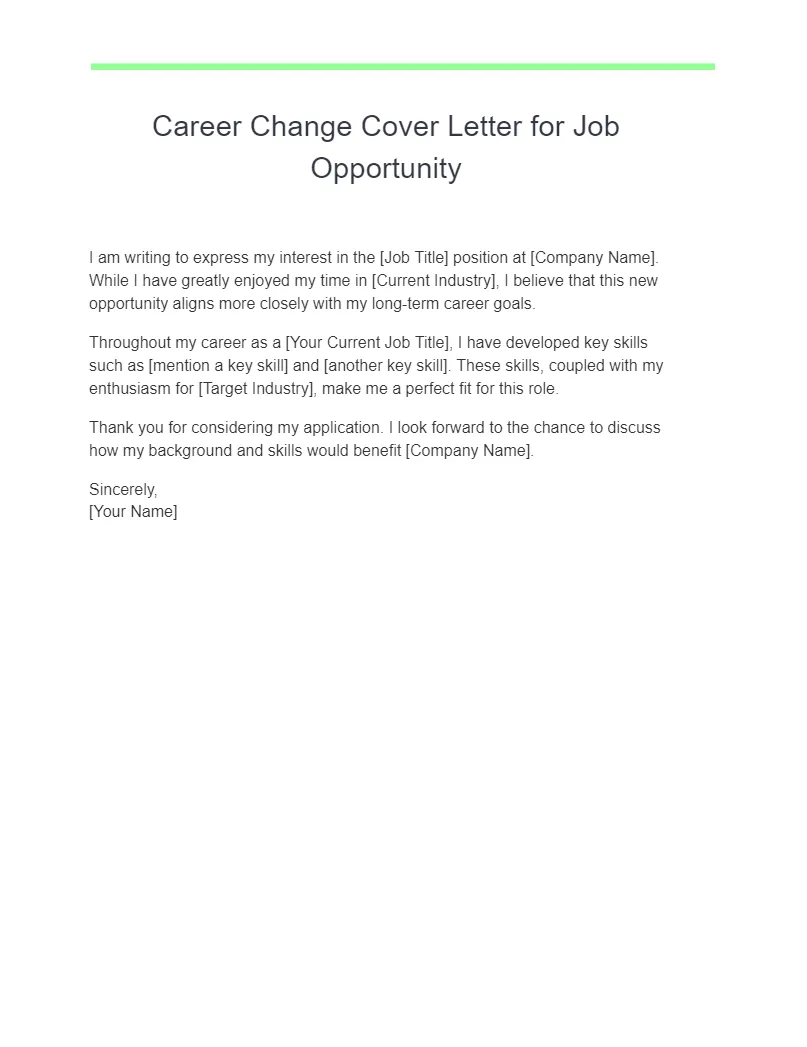
Start with a professional header that includes your contact information (name, phone number, email, and possibly a LinkedIn profile URL). Address the hiring manager by name if possible. Research the company and use LinkedIn or the company website to find the correct person. Your introduction should immediately grab the reader’s attention. State the position you’re applying for and briefly mention why you’re excited about it. Then, provide a brief overview of your career change and how your skills align with the job requirements. Your introduction should convey your enthusiasm and highlight your understanding of the role and the company.
The Body Paragraphs
The body of your cover letter is where you demonstrate your qualifications and address the career change in detail. This section should consist of two or three paragraphs. In the first body paragraph, briefly explain your previous career experience and the reasons for your career change. In the second and third paragraphs, focus on highlighting your transferable skills and relevant achievements. Provide specific examples from your past roles to showcase how you’ve successfully applied those skills. Tailor these examples to match the requirements outlined in the job description, making sure to emphasize the impact of your contributions. If possible, mention any professional development or training you’ve undertaken to support your career transition.
Demonstrating Enthusiasm and Fit
Throughout the body paragraphs, express genuine enthusiasm for the new role and the company. Show that you’ve researched the company and understand its values and mission. Explain why you’re a good fit for the role. Mention any specific projects, initiatives, or aspects of the company that resonate with you. Avoid generic statements. Be specific about why you are interested in the role, what you can bring to the company, and how your skills align with their needs. Show your passion and desire to contribute to their success.
Addressing the Career Change Directly
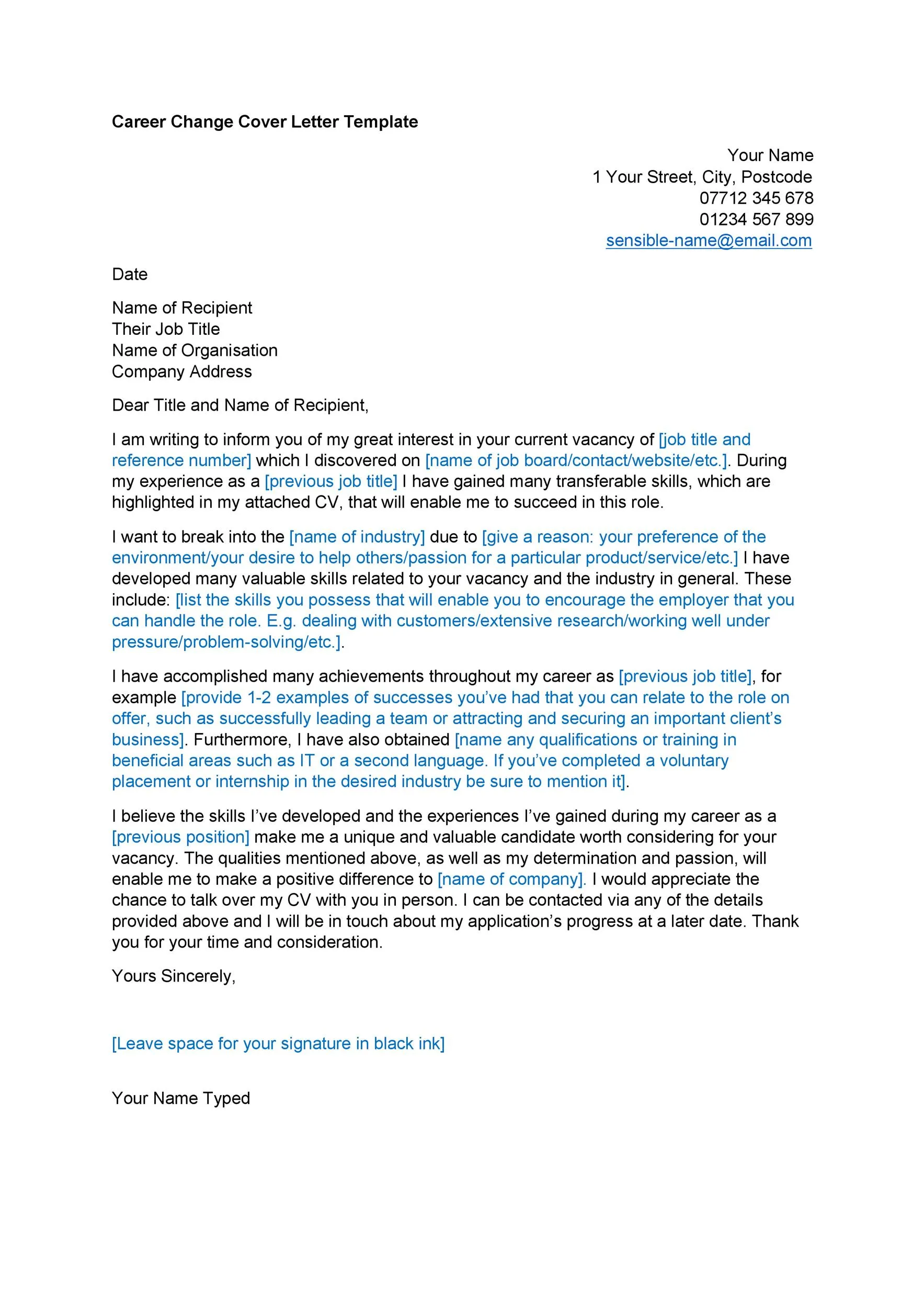
Do not shy away from addressing the career change directly. Acknowledge your shift in career path and explain your motivations for pursuing this new direction. Be honest and authentic about the reasons behind your career change. This may include a desire for new challenges, a passion for a specific industry, or the development of new skills. Frame your career change as a strategic decision that aligns with your long-term goals. Reassure the hiring manager that you are committed to the new field and eager to learn and grow. Explain the steps you’ve taken to prepare for your transition, such as relevant coursework, certifications, or self-study.
The Closing and Call to Action
Conclude your cover letter with a strong closing statement. Summarize your key qualifications and reiterate your enthusiasm for the role. Clearly state your desire for an interview. End with a confident call to action, such as ‘I am eager to discuss how my skills and experience can benefit your team. Thank you for your time and consideration. I look forward to hearing from you soon.’ Proofread your cover letter carefully before submitting it. Make sure it is free of grammatical errors and typos. A well-written cover letter is an essential tool for making a positive first impression.
Showcasing Your Achievements
Beyond simply listing your responsibilities, your career change cover letter should focus on showcasing your achievements. This is particularly important when transitioning to a new field. Highlighting your accomplishments demonstrates your ability to produce results and adds credibility to your claims. Achievements show the value you can bring to a new employer, no matter your background. To make your achievements stand out, use the STAR method Situation, Task, Action, Result. Describe the situation you were in, the task you were assigned, the actions you took, and the results you achieved. This method helps to provide concrete examples of your skills and experience.
Quantifying Your Accomplishments
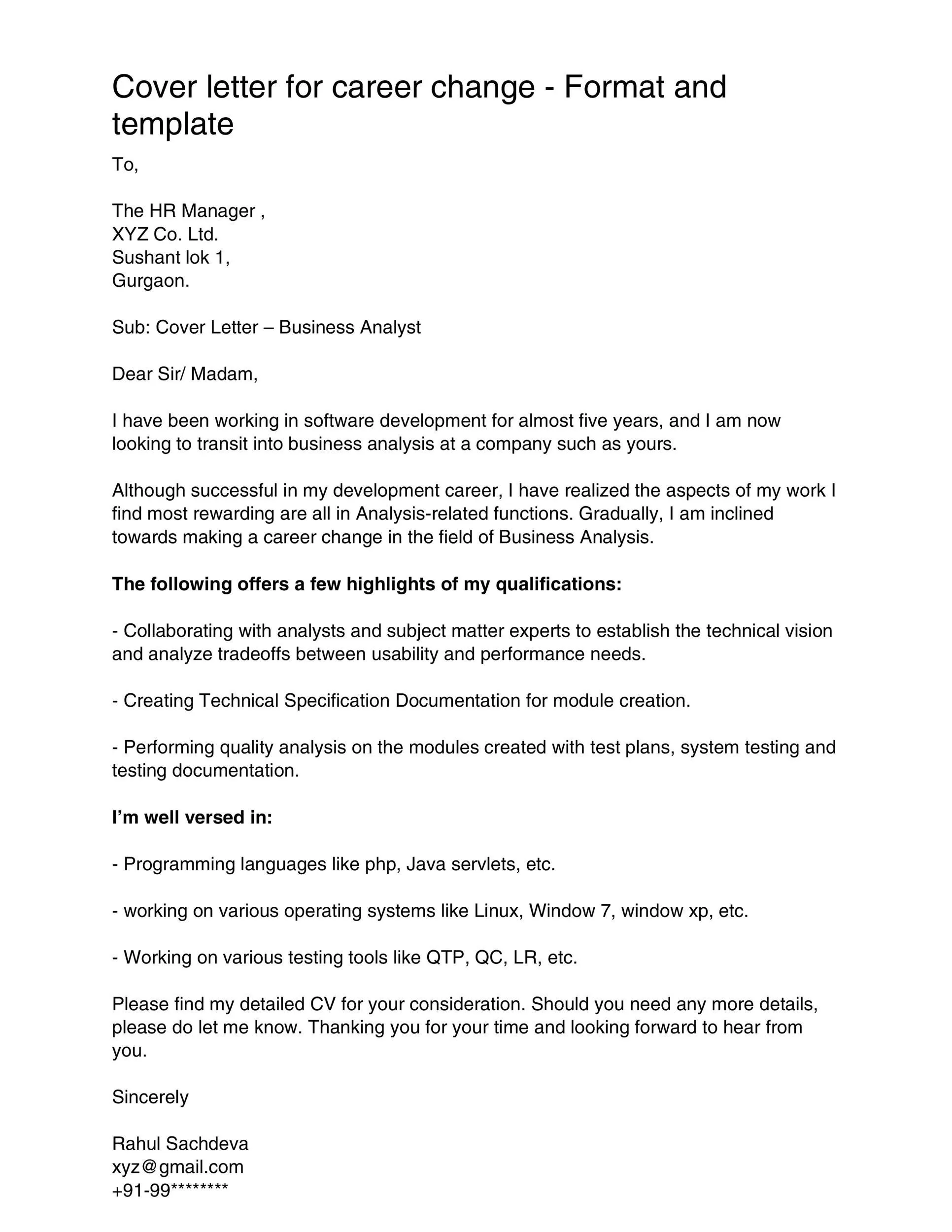
Whenever possible, quantify your accomplishments. Use numbers, percentages, and data to demonstrate the impact of your work. For example, instead of saying, ‘Improved customer satisfaction,’ say, ‘Increased customer satisfaction by 15% through implementing a new feedback system.’ Quantifiable achievements are more compelling and provide a clearer understanding of your capabilities. This also allows the hiring manager to immediately grasp the value you can bring. If you’re struggling to quantify your achievements, revisit your past roles and think about the tangible results you achieved. Use numbers and metrics to clearly showcase the impact of your contributions.
Using Action Verbs Effectively
Use strong action verbs to describe your accomplishments and responsibilities. Action verbs make your cover letter more engaging and dynamic. They show that you are proactive and results-oriented. Start each bullet point or sentence with a strong action verb that accurately describes your actions. Examples of effective action verbs include ‘managed,’ ’led,’ ‘developed,’ ‘implemented,’ ‘achieved,’ ‘improved,’ ‘streamlined,’ ’negotiated,’ and ’launched’. Ensure the verbs accurately reflect your actions and the impact you had in each role. This will help your cover letter stand out and highlight your achievements.
Tailoring Your Cover Letter to the Job
Generic cover letters rarely make a strong impression. To increase your chances of success, tailor your cover letter to each specific job you apply for. This demonstrates that you’ve taken the time to understand the role and the company’s needs. Customization tells the hiring manager that you are genuinely interested in the opportunity and have the skills and experience they seek. The more you tailor your cover letter, the more effective it will be.
Researching the Company and Role
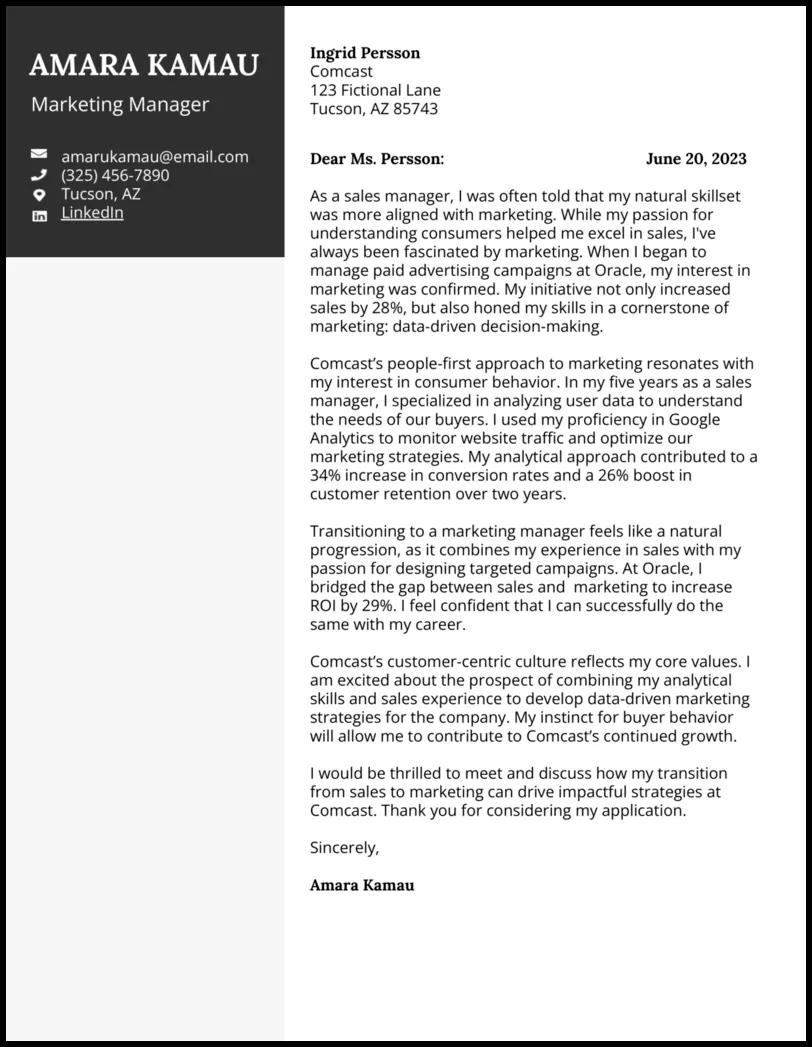
Before writing your cover letter, research the company and the specific role. Explore the company’s website, social media profiles, and recent news articles. Learn about their mission, values, and recent projects. Carefully read the job description and identify the key skills and qualifications the employer is seeking. This research will help you to understand the company’s needs and the expectations for the role. Use this information to customize your cover letter to show how your skills and experience align with their requirements.
Customizing the Letter for Each Application
Once you’ve researched the company and role, tailor your cover letter to the specific job description. Highlight the skills and experiences that are most relevant to the role. Use keywords from the job description to demonstrate that you possess the required qualifications. Provide examples of your accomplishments that align with the company’s needs. Customize your letter to reflect the company’s culture and values. This shows that you’ve taken the time to understand the role and the company, which will significantly increase your chances of landing an interview. Even if the changes are subtle, a customized letter demonstrates your sincere interest and attention to detail.
Common Mistakes to Avoid
Avoiding common mistakes can significantly improve the effectiveness of your career change cover letter. These mistakes can often lead to your application being rejected. Be aware of these pitfalls and make sure you avoid them when writing your cover letter. Pay attention to these critical errors so that you can avoid them. By doing so, you will significantly increase your chances of success.
Generic Content and Lack of Specificity
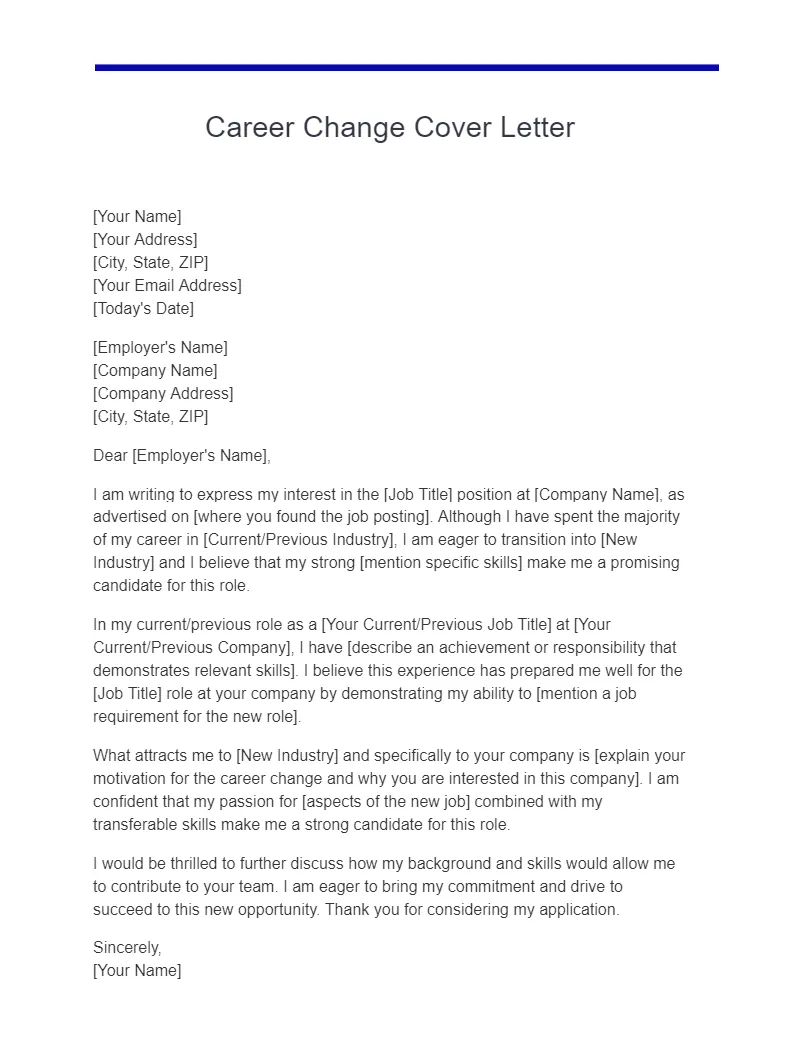
Avoid generic cover letters that could apply to any job or company. Generic letters fail to demonstrate your interest and suitability for the specific role. Make sure you tailor your letter to each opportunity. Also, lack of specificity is a major problem. Vague statements and generalities do not provide any information or convince the hiring manager of your abilities. Provide concrete examples of your accomplishments and skills. Quantify your results whenever possible. This will enhance your letter and impress the hiring manager.
Focusing on Past Jobs Instead of Skills
In a career change cover letter, the focus should be on your transferable skills and achievements, not just a list of your past job responsibilities. While it is important to mention your previous roles, the primary goal is to showcase how your skills and experience are relevant to the new field. Instead of simply listing your duties, highlight your accomplishments and how you used your skills to achieve them. Quantify your achievements to provide a clearer understanding of the impact of your contributions. This strategy allows you to present yourself as a valuable candidate for the new role.
Ignoring the Needs of the Employer
Your cover letter should be focused on the employer’s needs, not just your own career goals. Demonstrate that you understand the company’s objectives and how you can contribute to their success. This means researching the company and the role to understand their requirements. Show the employer that you are the best fit. Highlight how your skills and experience align with their needs and how you can solve their problems or help them achieve their goals. Make sure you show that you understand the company and the role, and that you can help.
